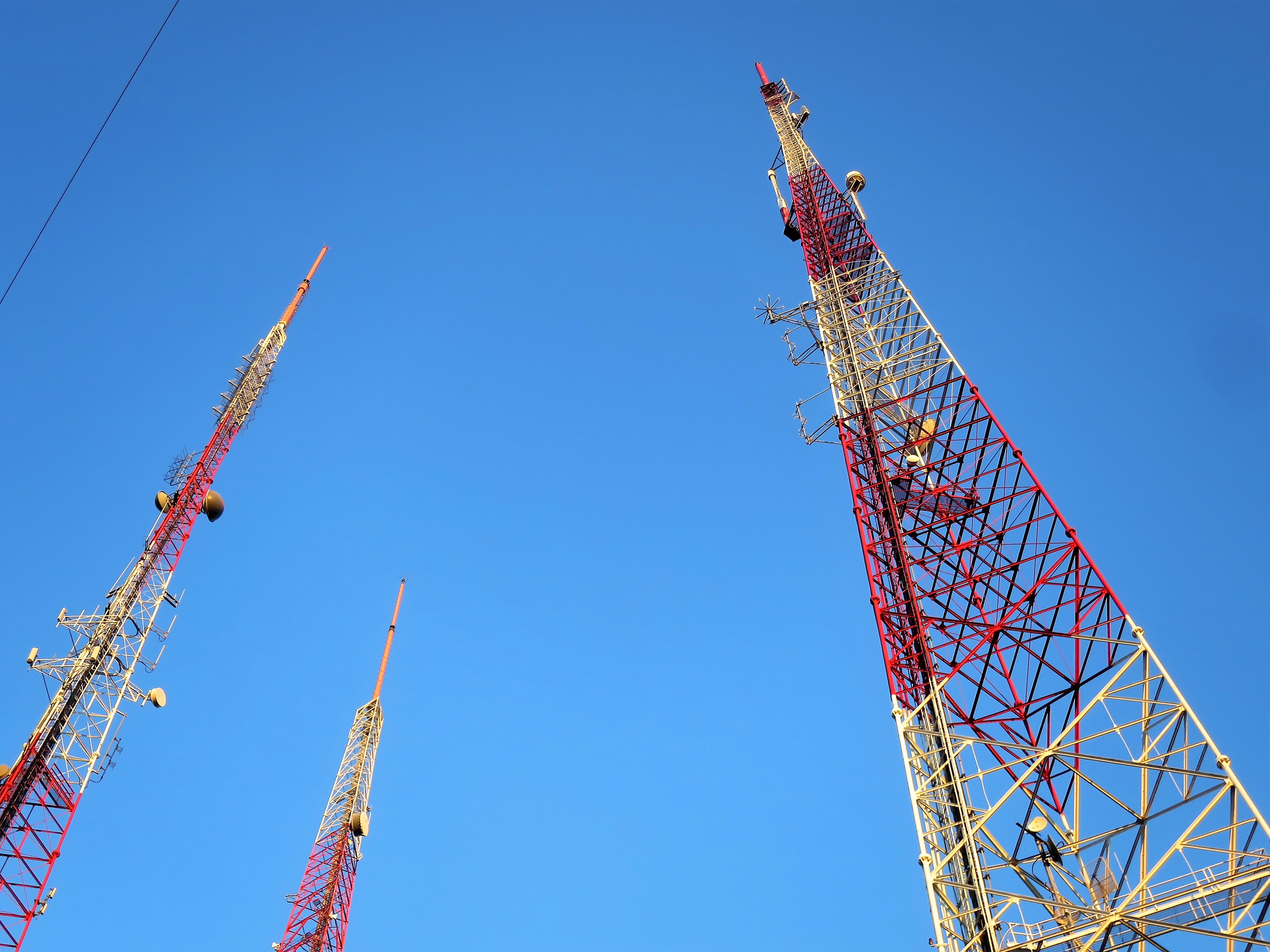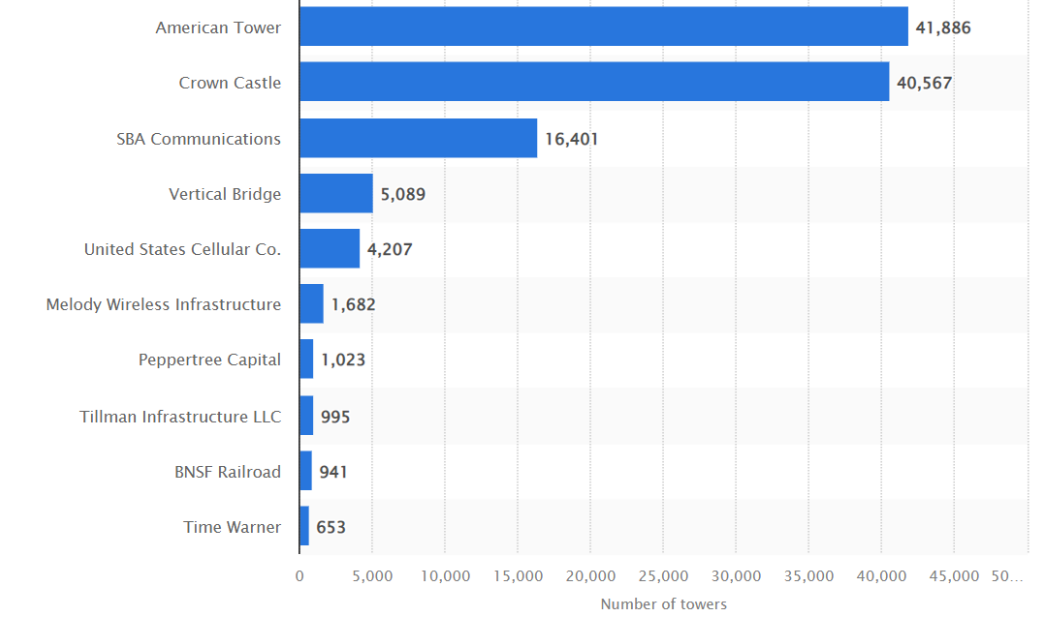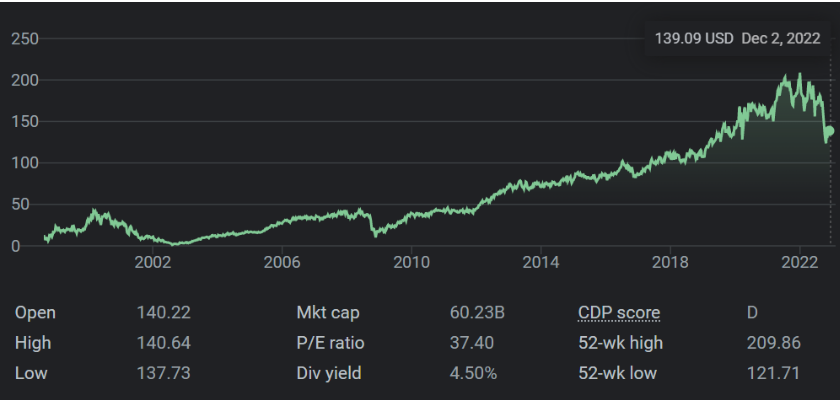“Why you should buy a cell tower”
Cool clickbait title, huh? Yeah, it took us a minute to come up with that. Try as we might, it’s hard to make the phrase “wireless infrastructure investment” sound sexy.
But while it might not sound like much, we assure you: it is.
Wireless infrastructure takes up a huge amount of space, and demand for it will only increase over the foreseeable future. For that reason, it has a worthy place in many real estate investors’ portfolios.
Today, we’re gonna tell you how to do it.
Wireless infrastructure is a big deal
Okay, we’ll bite on the first question: “what do you mean by ‘wireless infrastructure?’” Here’s the answer:

Let’s start with some numbers. First, there are close to half a million of these bad boys throughout the country. And the total number of cell sites is much higher—with some figures ranging north of a million. That’s a lot, but when you consider the U.S. has nearly four million square miles, it gets a little easier to understand why Sprint never gives you any dang bars cell connectivity could be better in many places.
But what’s really interesting is who owns those towers. Check this out:

The lion’s share of the nation’s cell towers are owned by just a handful of players—ones you’ve probably never heard of. Why is that? Why aren’t they owned by cell companies?
Good question. The answer is: American Tower, Crown Castle, etc., are REITs. Cell providers aren’t interested in owning and operating the real estate commitment those cell towers require, so they’re happy to outsource the job to entities that do have expertise in the real estate business. And because those companies are REITs, investors can get in on the action. For some investors, that’s gone very well indeed: here’s American Tower’s all-time price history.

And here’s Crown Castle’s:

Of course, both have taken a bit of a beating recently as the bear market comes for everybody. But the meteoric rise of the 2010s is a testament to the growing demand for fast, everywhere cell service. (And, I mean, it makes sense; think about how annoyed you get when you can’t load your FYP while you wait 90 seconds at the local third-wave coffee shop.)
That, in turn, takes up a lot of land.
And the economics make a ton of sense for real estate investors. First, because cell towers actually don’t take up all that much space—about 100ish square feet—it doesn’t make much sense to buy land specifically for the purpose of installing cell sites. Instead, providers typically rent them, which yields passive income for landowners willing to lease to a tower provider. Average annual rent for a cell tower can be north of $40,000. For 100 square feet, that’s pretty good.
It gets better when you consider that multiple providers can rent tower access. Since there are three major cell providers in the U.S. (Verizon, T-Mobile, and AT&T), that’s not an uncommon situation—and it drives annual rent even higher without substantially increasing operating costs.
It’s about to be a bigger deal
With the growing popularity of 5G, wireless infrastructure will soon require much, much more real estate. That’s for a couple of reasons.
First, while 5G can drive huge speed increases, it can basically only do that over short distances. (If you’re curious how that works, recall high school physics: shorter waves can carry more energy, which equates to higher data speeds, but they dissipate more quickly.)
That means to get the vaunted higher speeds, you need more cell sites—lots more. And because installing a cell tower on every city block would be a costly aesthetic blight, providers are resorting to smaller-scale sites. By mounting sites on lamp-posts, billboards, and apartment buildings, they can offer high-speed 5G connectivity throughout major cities without building a ton of new cell towers.
While it’s too soon to say exactly how that increased demand is going to pan out, we’re already seeing massive investment into 5G infrastructure—indeed, enough for some analysts to wonder whether providers are overspending. And while the technological details probably aren’t relevant to most investors, a number of factors suggest the costs providers face will only increase as time goes on.
So what does that mean for real estate investors? Bigger returns. As providers race to grab the rights to put 5G stations where they need them, investors willing to lease a few square feet here and there could wind up making money hand-over-fist.
Conclusion
If you think running an apartment building sounds hard, try engineering a cell tower. While there’s tons of money in wireless infrastructure, it’s one slice of the real estate game that few—if any—individual investors are well-equipped to handle directly. The good news is that REITs already pretty much run the cell-tower-real-estate show.
And for investors who already have a lot of exposure to residential real estate, cell tower REITs are a great way to get exposure to another market sector (which is a great diversification play) while preserving access to the fundamentals that make real estate so attractive (like passive income, leverage, and the other stuff we talk about all the time around here).
Of course, it’s still a pretty niche investment—which means we wouldn’t exactly be lining up to throw money at it without a strong baseline in other assets like stocks and residential real estate. But for investors who’ve already built that baseline, wireless infrastructure REITs look like an effective way to diversify the portfolio and access serious upside potential as 5G investment continues.

